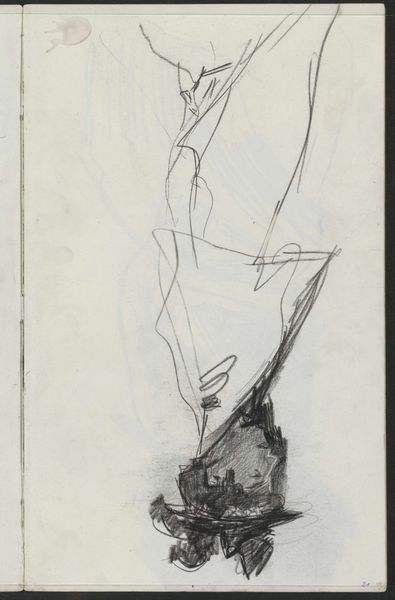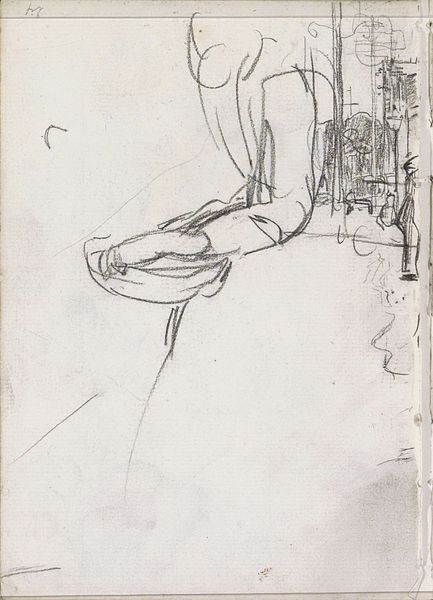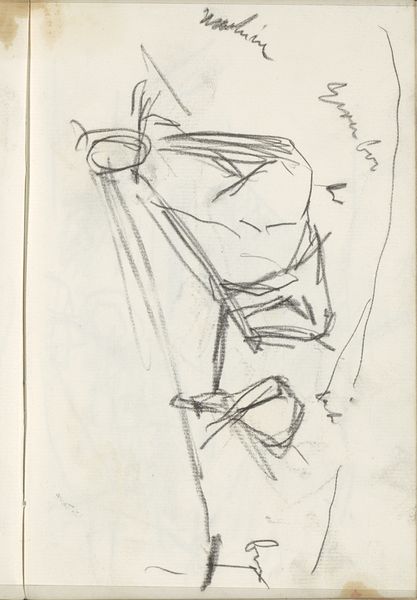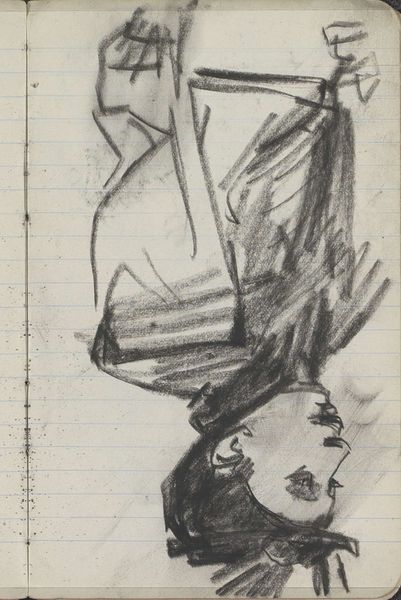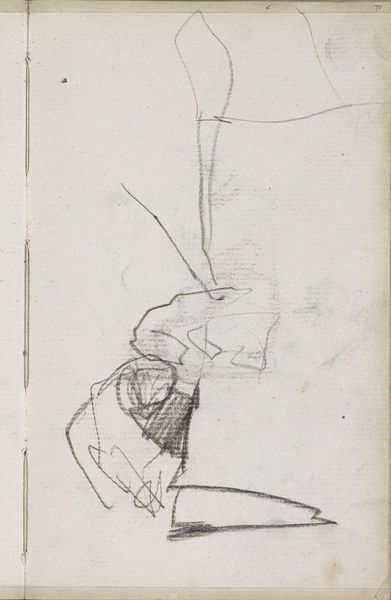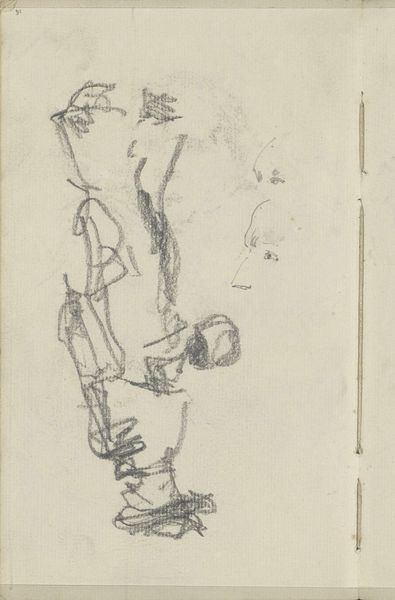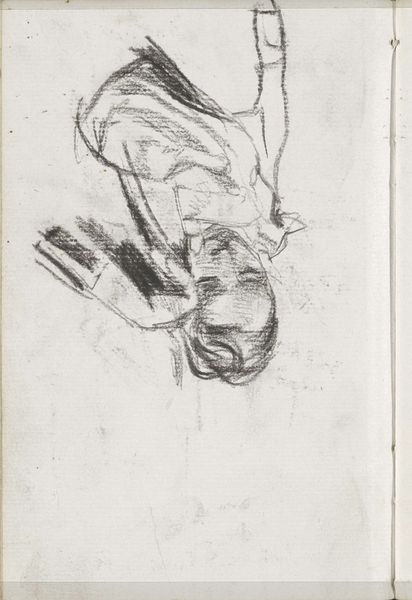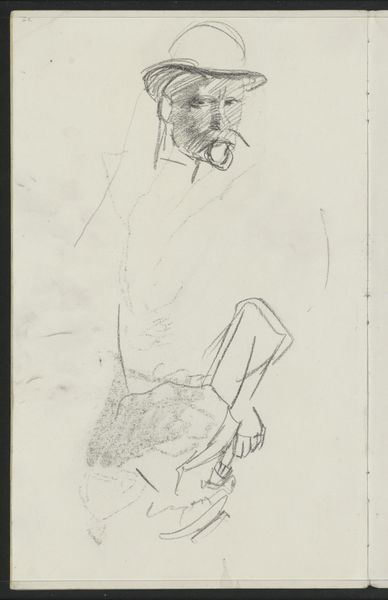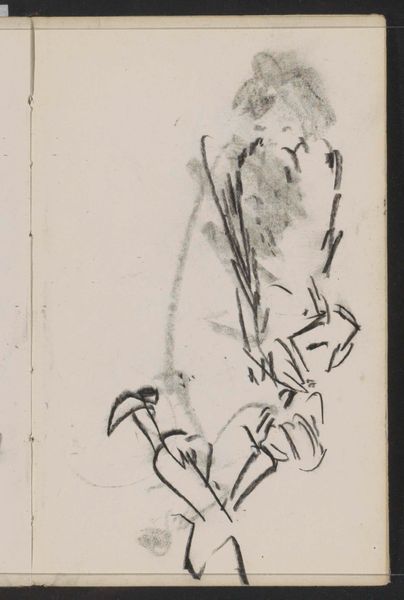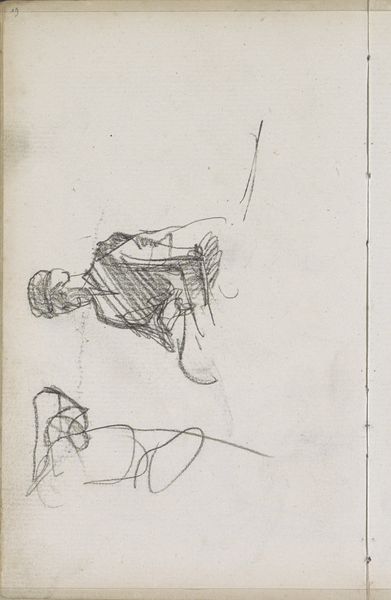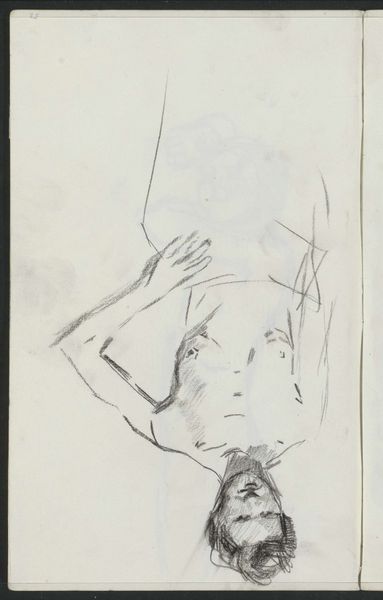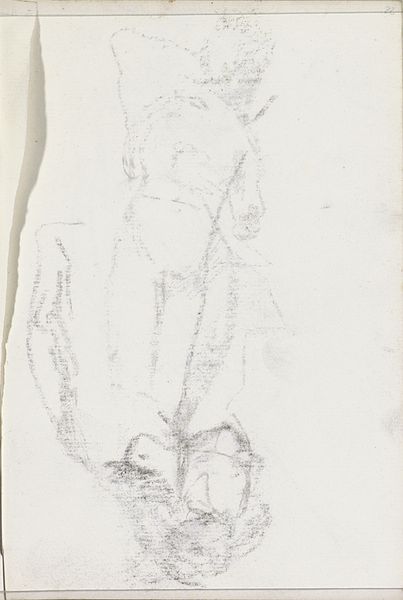
Copyright: Rijks Museum: Open Domain
Curator: Isaac Israels' pencil drawing, "Vrouw, in profiel," which translates to "Woman, in profile," completed sometime between 1875 and 1934, depicts exactly that: the head of a woman seen in profile. Editor: It looks hastily done, like a quick sketch from a busy cafe. The lines are energetic, even a bit messy. There's a rawness that’s almost unnerving. You can feel the hand of the artist moving quickly, almost desperately, to capture a fleeting impression. Curator: Interesting you say desperate. Profiles, particularly those quickly sketched like this, can act as almost secret or even subversive documents, capturing a hidden aspect of the sitter or perhaps the artist's memory. Note how the bare minimum is provided; the single contour defining the angle of her neck or the few lines for hair...these all combine into what must be deemed, on its own terms anyway, quite successful likeness even within such extreme limitation of artistic vocabulary and material application. Editor: It is compelling, but let's think about that pencil—how cheap and readily available it was. A stark contrast, really, to the laborious process and costly materials we often associate with formal portraiture, like the oils and supports needed by academic tradition for portraits during this same period. Here Israels is literally picking up any scrap of paper, any graphite stick to record something deemed "worthy". No pomp here. It makes me wonder about the setting of its creation...a new type of studio space emerging to reflect this new means by which to record it too perhaps...an art that truly reflects a change not only to art forms itself but fundamentally linked with class. Curator: Yes, it's a wonderfully accessible and immediate medium—and Israels seems determined to highlight it! But don't you find something deeper at play here, even symbolic? That such ephemeral, minimal strokes, with humble graphite can encapsulate someone so beautifully says something to me personally, too: that our essence can be contained by more subtle markings which linger in time still and memory, a whisper of the subject rather than full story, perhaps; or just essence as it really often remains regardless—not some overwrought pompous tale nor object made only through precious rare resource that serves solely the privileged within elitist hierarchy.... but one felt in everyday lived material experiences common throughout generations equally! Editor: I see your point about its lasting impact given simple means, and indeed how the subject lingers despite this seeming ephemeral, and yet... it’s fascinating how something created so casually can possess such power of recognition! It just further cements my view of how the means behind its production (such cheap pencil, common paper type and accessible style overall) allow easier, wider production which inherently shifts accessibility paradigm of artworks within capitalist structures especially once placed amongst private commodity trade between bourgeois collector buyers/owners Curator: An astute analysis! Yes—this simple piece can speak volumes about history, artistic legacy and also the socioeconomic reality that informs production! Editor: Indeed, truly the beauty of understanding through materiality lies ultimately in democratising thought beyond beauty's more common and outdated interpretations historically dominant till now also!
Comments
No comments
Be the first to comment and join the conversation on the ultimate creative platform.
